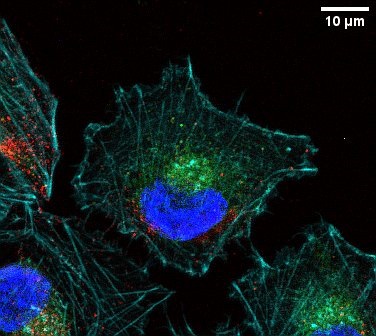Innovative LoxCode Technology Reveals Insights into Cellular Development

In a groundbreaking study published in *Cell* on June 24, 2025, scientists at the Walter and Eliza Hall Institute (WEHI) have unveiled an innovative technology called LoxCode that promises to transform our understanding of cellular development. This advanced method enables researchers to track the lineage of individual cells in genetically engineered mice, providing unprecedented insights into how cells divide, migrate, and differentiate into the complex structures that comprise the human body.
The research, led by Professor Shalin Naik, highlights a significant advancement in cellular tracking during embryonic development. According to Professor Naik, 'When life is a ball of just a few hundred cells, we discovered that some cells could individually give rise to every tissue in the body, while others were already destined to become a certain type of tissue, like brain, gut, limbs, or blood.' The implications of this discovery extend beyond basic biology, potentially paving the way for improved treatments for developmental disorders and diseases.
The LoxCode technology assigns a unique DNA barcode to each cell, which can then be traced and analyzed as the organism develops. Lead author Dr. Tom Weber noted, 'With LoxCode, each cell is dealt a unique hand which is inherited by its descendants that form the organism. This creates a trackable barcode, allowing us to peer inside this fundamental process with unprecedented detail.' This method allows for the generation of up to 30 billion distinct DNA barcodes, vastly exceeding the capabilities of existing tracking technologies.
The significance of the findings lies in the understanding of cellular fate and lineage. The study reveals that some cells maintain the potential to differentiate into various tissue types, while others become fate-restricted much earlier than previously recognized. This knowledge could lead to better strategies for addressing developmental disorders by identifying the early roots of these conditions.
Numerous research teams globally are currently utilizing the LoxCode model to explore a range of biological questions, from organ development to tissue regeneration following injury. The potential applications of this technology are vast and could revolutionize fields such as regenerative medicine and cancer research.
An accompanying commentary in *Cell* by Dr. Emily Chen, a developmental biologist at Stanford University, emphasizes the importance of this study: 'The ability to track cellular origins with such precision allows us to delve deeper into the complexities of development and disease. This is a significant leap forward that could change how we approach biomedical research.'
In conclusion, the LoxCode technology represents a significant milestone in cellular research, promising to enhance our understanding of developmental biology and offering potential pathways for future medical advancements. As more laboratories adopt this innovative tool, the scientific community anticipates a surge in discoveries that could redefine our knowledge of life’s building blocks.
For further details on this research, please refer to the full study: Tom S. Weber et al, 'LoxCode in vivo barcoding reveals epiblast clonal fate bias to fetal organs,' *Cell* (2025). DOI: 10.1016/j.cell.2025.04.026.
Advertisement
Tags
Advertisement





